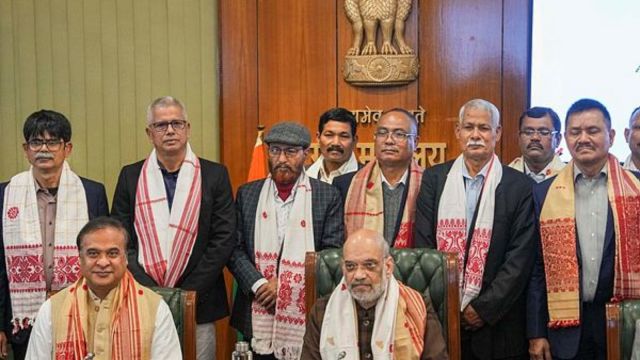
Dialogue with belligerent groups is a long-drawn-out process. Years of back-channelling, compromises, and interests of various third parties are interspersed with attempts by actors to play spoilers. This process is particularly long in the Indian context. The Naga Peace Process continues to be the longest-running in the world. The ceasefire of 1997 with the NSCN (IM) has been marred by a series of mistakes, the most glaring of which was the way the careful work of interlocutors was undermined by heavy-handed gubernatorial intervention.
More often than not, the approach in India’s northeast has been either neglect or to “wear out” insurgent groups. But on December 29, better sense seems to have prevailed. The dialogue with the ULFA (Pro-Talks) has finally reached a happy conclusion.
ULFA was a militant manifestation of the students’ agitation against illegal migration from Bangladesh and was formed in an Ahom amphitheatre in Sibsagar on April 7, 1979. During its heyday, ULFA wielded serious clout in Assam. During its chequered history, there were three important Indian Army operations against it in Assam — namely Operation Bajrang, Operation Rhino-I and Rhino-II.
ULFA waged war in urban settings and was protected by local sympathy in the hinterland. It had bases in five neighbouring countries — Bangladesh, Bhutan, China, Nepal and Myanmar — which allowed for a strategic encirclement of the Northeast. Indeed, the group’s anti-talk faction, led by Paresh Baruah, continues to have a watered-down presence and camps in Myanmar’s Sagaing Division.
However, active military operations and strategies that included kinetic action, psychological initiatives and developmental imperatives won the day and ULFA soon careened out of control.
Bhutan mounted an armed operation and broke ULFA’s back in the Himalayan kingdom. Its move to Bangladesh was facilitated by the shenanigans of Pakistan’s ISI and Khaleda Zia’s patronage. With the return of Sheikh Hasina’s Awami League government, all the important leaders of the outfit were handed over to India. Soon, a magnanimous New Delhi was talking about peace more or less on its own terms.
The insurgent demand for sovereignty was left out in the cold and the charter of demands was tailor-made to suit the long-held grouses of many in Assam. Efforts were geared to ascertain an honourable exit for the “Ranghar youth” — referred to as such after the place where ULFA was formed.
However, certain observers of the peace agreement are questioning the laudable effort. They argue that the Paresh Baruah faction continues to stay away from the dialogue process. Indeed, there have been attempts by ULFA (Independent) to make a comeback.
The apprehension of ULFA member Vivek Axom by the Assam Rifles in Arunachal Pradesh has dealt a body blow to the organisation’s attempts to regain lost ground. It is also widely acknowledged that the ULFA led by Paresh Baruah is a dying organisation. It has a few run-down camps in Myanmar — but what remains of the organisation has neither ideological nor military will.
New Delhi’s achievement on December 29, 2023, will go down as one of the most important national security successes in recent times.
Saikia is a conflict analyst and author